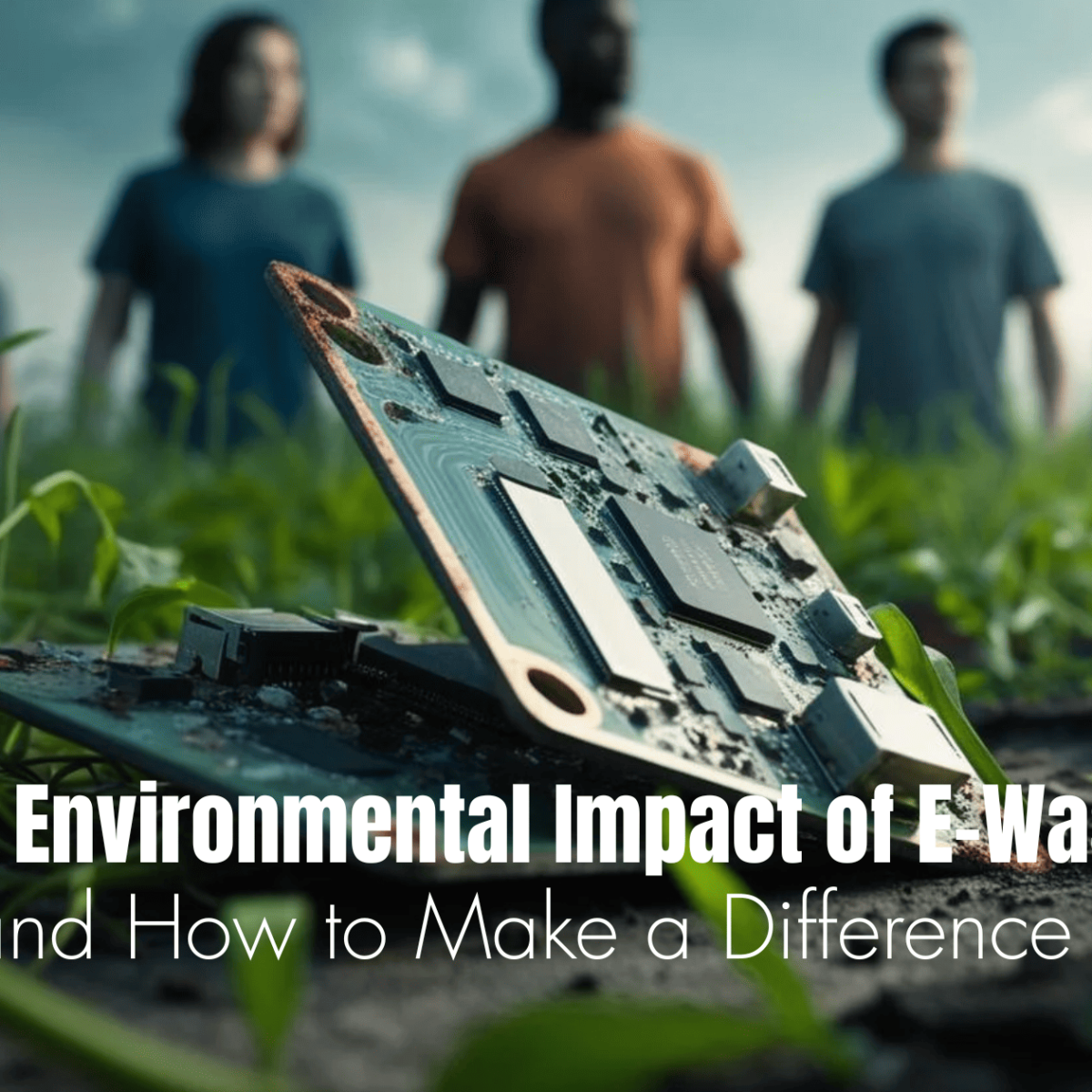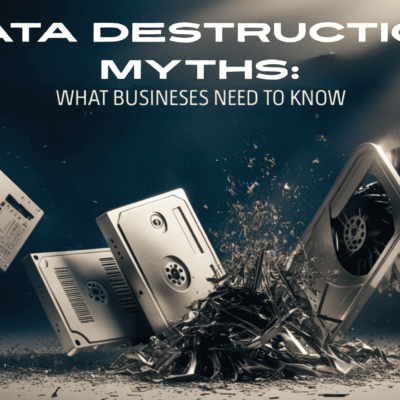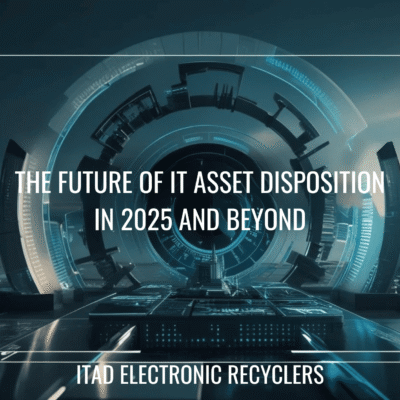Introduction
Electronic waste (e-waste) is a growing global crisis, with millions of tons of discarded electronics polluting landfills, contaminating water sources, and contributing to climate change. As businesses and consumers continuously upgrade their IT assets, the improper disposal of outdated devices has become a significant environmental and health concern.
Understanding the environmental impact of e-waste is the first step toward making a difference. Businesses, in particular, have a critical role to play in reducing e-waste by implementing sustainable IT asset disposition (ITAD) strategies. In this guide, we’ll explore the harmful effects of e-waste, the importance of responsible disposal, and actionable steps businesses can take to minimize their environmental footprint.
📌 Related: E-Waste: A Growing Global Concern and What Your Business Can Do
1. The Growing Environmental Threat of E-Waste
E-waste consists of discarded electronic devices, including computers, servers, smartphones, and office IT equipment. As businesses and individuals replace devices more frequently, the global volume of e-waste continues to rise at an alarming rate.
Staggering E-Waste Statistics
- In 2022, the world generated approximately 53.6 million metric tons of e-waste, with projections reaching 74 million metric tons by 2030.
- Less than 20% of e-waste is properly recycled, leaving millions of tons to be illegally dumped, exported, or sent to landfills.
- E-waste accounts for 70% of toxic waste in landfills, releasing hazardous chemicals into the environment.
📌 link: EPA Electronics Recycling Regulations
2. The Environmental Consequences of E-Waste
The improper disposal of electronic devices has far-reaching environmental consequences that affect the air, water, and soil.
Soil and Water Contamination
E-waste contains toxic substances such as lead, mercury, cadmium, and arsenic, which seep into the soil when dumped in landfills. Rainwater can carry these chemicals into groundwater supplies, contaminating drinking water and harming local ecosystems.
Air Pollution and Greenhouse Gas Emissions
When e-waste is incinerated or improperly processed, harmful fumes are released into the atmosphere. The mining and manufacturing of new electronic devices also contribute to high carbon emissions, driving climate change.
Harmful Effects on Human Health
Communities near e-waste dumpsites—especially in developing countries where illegal e-waste exports occur—face serious health risks due to exposure to toxic materials and air pollutants. Workers in informal recycling operations are often exposed to hazardous chemicals without proper protective gear.
📌 Related: The Future of ITAD Services: Trends You Need to Know
3. How Businesses Can Make a Difference
With businesses generating a significant portion of e-waste, implementing sustainable IT asset disposal strategies is essential. Companies can reduce their environmental footprint by following best practices for responsible e-waste management.
Develop a Sustainable IT Asset Disposition (ITAD) Strategy
An ITAD strategy ensures that retired IT assets are responsibly handled instead of discarded in landfills. Businesses should:
- Partner with certified ITAD providers to ensure ethical e-waste recycling.
- Implement a zero-landfill policy to prevent unnecessary disposal.
- Track and document IT asset lifecycle to promote accountability.
📌 Related: A Detailed Guide to IT Asset Disposal
Choose an R2-Certified ITAD Provider
Not all recycling programs follow strict environmental and security guidelines. By working with an R2-certified ITAD provider, businesses ensure that their retired electronics are:
- Processed safely without harming the environment.
- Properly sanitized to protect sensitive company data.
- Recycled or refurbished to extend the lifecycle of IT assets.
📌 Related: Understanding R2 Certification: What It Means for Your Business
Prioritize IT Asset Refurbishment and Reuse
Many IT devices still have value and functionality even after businesses upgrade their technology. Instead of disposing of old devices, companies can:
- Donate functional IT equipment to schools or nonprofit organizations.
- Resell refurbished devices to secondary markets.
- Repurpose computers and servers for in-house operations.
📌 Related: How ITAD Can Generate Revenue for Your Business
Encourage Employee Participation in E-Waste Reduction
Businesses can also promote sustainable practices among employees by:
- Providing e-waste collection bins for old electronics.
- Offering corporate buyback programs for personal IT devices.
- Educating staff on responsible IT disposal methods.
📌 Related: How ITAD Can Help You Meet Your ESG Goals
4. The Future of E-Waste Management
As governments and corporations prioritize sustainability, new solutions are emerging to reduce e-waste and promote a circular economy.
Stricter E-Waste Regulations
Governments worldwide are implementing stronger e-waste laws, requiring businesses to:
- Comply with environmental disposal guidelines.
- Report on their e-waste management efforts.
- Use certified recycling and ITAD services.
Advancements in Green Technology
Innovations in e-waste recycling technology are making it easier to recover valuable materials like gold, silver, and rare earth metals from old electronics. Sustainable manufacturing practices are also reducing the need for new raw materials.
Increased Corporate Responsibility
Companies are integrating e-waste reduction into their ESG (Environmental, Social, and Governance) strategies to enhance corporate social responsibility and meet sustainability goals.
📌 link: EPA Sustainability Guidelines
Conclusion: Take Action to Reduce E-Waste
E-waste is a global crisis that requires immediate action. Businesses have the power to minimize environmental harm by adopting sustainable IT asset management practices. By implementing a structured ITAD strategy, working with certified recyclers, and promoting responsible disposal habits, organizations can:
- Prevent hazardous waste contamination in landfills.
- Reduce carbon emissions associated with electronics manufacturing.
- Protect sensitive company data through secure disposal.
- Contribute to a circular economy by refurbishing and repurposing IT assets.
At IER ITAD Electronics Recycling, we help businesses safely and sustainably dispose of IT assets through R2-certified recycling and secure data destruction. Contact us today to develop an ITAD strategy that aligns with your company’s sustainability goals.





